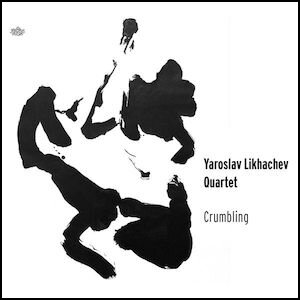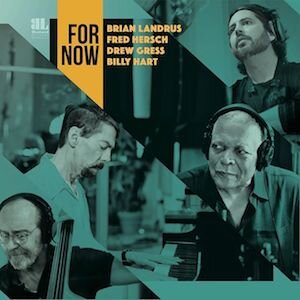Label: JazzHausMusik, 2020
Personnel - Yaroslav Likhachev: tenor saxophone; Yannis Anft: piano; Conrad Noll: bass; Moritz Baranczyk: drums.
Russian-born, Germany-based saxophonist Yaroslav Likhachev debuts with an engaging album of original music featuring a cast of young stars - pianist Yannis Anft, bassist Conrad Noll and drummer Moritz Baranczyk. The quartet was formed in 2016 and the musical rapport developed between its members is founded on a depth of artistic communication that is quite fascinating to observe.
The opening title, “November Tune”, displays an introductory section where the bass leads, confidently backed by piano and brushed drums. Moments later, the authoritative presence of Likhachev is strongly felt by the virtue of a spirited melodicism and burning improvisational flair. Catchy figures and bending notes are constituent elements of his articulated phrases, whose compelling rhythmic drive benefits from Anft’s tension-and-release logic. The pianist mitigates the energy by the end, when Noll’s arco bass interjections become tangible.
“The Fifth Mode” is a fully grooving tour de force crafted with not just individualistic perspective but also synergistic collective effect. The group’s agile maneuvers and ecstatic posture make you want to dance to it.
In contrast, introspective moments can be found on “Ballad For Eli”, which is positively touched by Baranczyk’s deft moves and cymbal glow, and “Traceless Rails, Traceless Waters”, which closes out the album with an unflappable stability. Stability is also what characterizes “Sicilian Flower”, a waltz with shades of Charles Lloyd’s spirituality and Jerry Bergonzi's eloquence.
As a result of the range in dynamics and mood, the most peculiar piece on the album is undoubtedly the title track. Anft weaves the enigmatic first section with both composed and startling actions, and a short time later, we're taken by the surprising impact of the odd-metered theme. The rhythm engine is in a trance during the piano stretch and the arrival of Likhachev brings extra strength and rock-solid attitude to the setting. When the band revisits the obscure ambience presented in the overture, Moll is given an opportunity to explore sound through extended techniques, and he does it with a beautiful aesthetic purpose.
Managing to transform the bebop language into new forms of expression, Likhachev’s bracingly fresh debut is strongly recommended.
Grade A-
Favorite Tracks:
01 - November Tune ► 02 - The Fifth Mode ► 04 - Crumbling










































